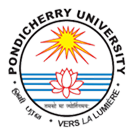
Introduction: Technology With a Human Purpose
When we think about technology, we often picture billion-dollar companies, advanced chips, or the latest apps. But technology is not only about industry or profit. It can also be about dignity, humanity, and community. One of the clearest examples of this is Enabling the Future (known as e-NABLE), a global volunteer movement where people use 3D printers to make prosthetic hands for those who cannot afford them.
The Beginning: A Prop That Sparked a Movement
The story began in 2011. Ivan Owen, a special effects artist in the United States, built a mechanical hand as part of a costume. He uploaded a video of his creation online. That video was seen by Richard Van As, a carpenter in South Africa who had lost several fingers in an accident. Richard reached out to Ivan, asking if they could work together to create a functional prosthetic hand.
They collaborated across continents, experimenting with designs. At that time, 3D printing was becoming more accessible, and they realized it could be used to produce prosthetic parts cheaply and quickly. Instead of keeping their design private or seeking patents, Ivan and Richard made a remarkable decision: they released the designs freely online.
Why a Volunteer Movement?
This decision was not about profit. It was about access. Traditional prosthetics can cost thousands of dollars, far beyond the reach of families in developing countries. By releasing open-source designs, anyone with a 3D printer could produce a hand for a fraction of that cost.
e-NABLE grew as a volunteer movement because:
- The founders believed in sharing knowledge rather than selling it.
- Families in need could not afford expensive devices, but communities could step in to help.
- Schools, universities, and hobbyists saw this as a chance to apply their skills to real-world problems.
What began with ordinary people quickly became something more. Ordinary people, yes—but then extraordinary people with skills, purpose, and passion came together to create change.
The Scale of the Movement
Today, e-NABLE has:
- Thousands of volunteers across the world.
- Dozens of active chapters in different countries.
- Tens of thousands of prosthetic hands and arms delivered at no cost.
- A growing library of designs for hands, arms, exoskeletons, and other assistive devices.
It remains true to its origins: grassroots, volunteer-driven, and powered by a belief in open knowledge.
Visit their page : https://enablingthefuture.org/
The India Connection
In India, the need for assistive technology is vast. Millions live with limb differences, but few can access quality prosthetics due to cost. While e-NABLE does not yet have a well-established national chapter here, India has strong foundations:
- Organizations like EnAble India have already reached hundreds of thousands of persons with disabilities.
- Maker spaces, engineering colleges, and innovation labs across India are equipped with 3D printers.
- Students in towns and villages are eager to use technology for meaningful work.
- India is missing its place on the e-nable volunteer map and here is hoping it begins in Auroville! It could be one of us.
This creates the perfect environment for students to adapt the e-NABLE model locally.
How Students Can Participate
You do not need to be a professional engineer to contribute. Students can begin by:
- Exploring e-NABLE’s open designs and learning the basics of 3D printing.
- Using college labs or maker spaces to prototype prosthetic parts.
- Forming student clubs or local chapters dedicated to assistive technology.
- Partnering with hospitals, NGOs, or rehabilitation centers to identify recipients.
- Sharing improvements and lessons with the global e-NABLE network.
Questions for Reflection
- If you had access to a 3D printer, what problem in your community would you try to solve?
- Beyond prosthetic hands, where else can low-cost, open-source technology bring change in India?
- Do you see yourself more as a designer, builder, or community organizer in such projects?
Conclusion: Your Turn
e-NABLE began because two people on different continents chose to share rather than sell. It became a volunteer movement because thousands of others believed in that same principle—that technology should serve humanity first.
For students, this is a reminder that innovation does not only belong to corporations or laboratories. It belongs to anyone willing to learn, share, and act. The next wave of change in technology for good could begin in your classroom, your lab, or your community.
How will you use technology to make a difference?

